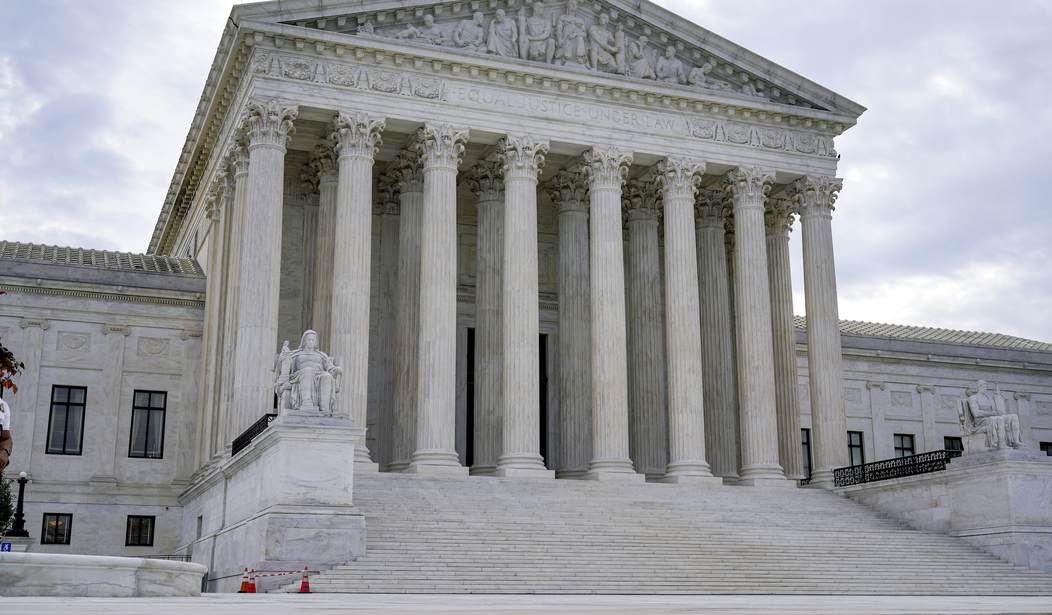It has been four weeks since Texas passed a new “heartbeat” law which limits abortions to about six weeks. So far the Supreme Court has failed to make any kind of announcement about the Texas law and this week, on Wednesday, the Court will be taking a look at a law out of Mississippi which limits abortions to 15 weeks.
Though the cases differ, what they have in common is that both provide an opportunity for a more conservative Supreme Court to potentially put an end to Roe v. Wade (and Planned Parenthood v. Casey). The Associated Press says both sides are arguing there is no middle ground here:
Both sides are telling the Supreme Court there’s no middle ground in Wednesday’s showdown over abortion. The justices can either reaffirm the constitutional right to an abortion or wipe it away altogether…
“There are no half measures here,” said Sherif Girgis, a Notre Dame law professor who once served as a law clerk for Justice Samuel Alito…
“A decision upholding this ban is tantamount to overruling Roe. The ban prohibits abortion around two months before viability,” said Julie Rikelman, who will argue the case for the clinic.
But the NY Times published a piece yesterday arguing that the Justices may indeed want to find some kind of middle ground here, albeit one that would necessarily rip the heart out of Roe by ending the current framework based on viability:
The court could overrule Roe entirely, allowing states to ban abortions at any point. But at least some justices may want to find a way to sustain the Mississippi law without overturning Roe in so many words, requiring them to discard the viability line and replace it with another standard that would allow a cutoff at 15 weeks.
Lawyers for Mississippi, who mostly argued that there is no constitutional justification for any line at all, did propose two backup arguments. They said the court could revise another existing standard, one prohibiting an “undue burden” on the right to abortion, to allow the 15-week cutoff by focusing on the fact that a substantial majority of abortions take place by then. Or, the lawyers wrote, the court could simply uphold the Mississippi law and leave for another day the knotty problem of drawing a new line.
But as even the NY Times points out, “viability” isn’t a line so much as a shifting and ultimately arbitrary goalpost.
When Roe was decided, viability was around 28 weeks. These days, depending on the hospital, fetuses can survive outside the womb after around 23 weeks…
Justice Harry A. Blackmun, who wrote the majority opinion, initially chose another place to draw the line, at around 13 weeks…
Justice Thurgood Marshall helped persuade his colleague to choose viability, around the end of the second trimester. “Given the difficulties which many women may have in believing that they are pregnant and in deciding to seek an abortion,” Justice Marshall wrote to Justice Blackmun, “I fear that the earlier date may not in practice serve the interests of those women, which your opinion does seek to serve.”
The Times also links to an interesting piece by a Cornell law professor who believes abortion should always be available to women at any point but also argues that the viability line as currently understood makes little in the way of moral sense.
Viability, however, would appear to have little to recommend it as a border between prohibiting and permitting abortion. What changes when a fetus becomes viable outside the womb? What changes is more or less that the fetus’s lungs have developed enough to take in oxygen without the placenta to absorb it from the mother’s bloodstream and pass it along through the umbilical cord. Is the ability to breathe outside the womb a morally relevant characteristic? How could it be? The ability to breathe is essential for life, but it is not the sort of thing to which we attach moral status, any more than the ability to see or to walk or to speak are such abilities. Such capacities are morally neutral, at best. At worst, a fixation upon them as a prerequisite for rights appears to embrace a problematic ableism. Are people who cannot breathe without assistance somehow “less than” those who can?
In addition to its irrelevance (and possible perversity) as a criterion for a fetus’s moral standing, viability also seems a bit illogical. Indeed, one might say that waiting until viability to protect the right to abortion is exactly backward. Up until viability, the fetus needs the mother’s body in order to live, yet we give the mother the right to remove the fetus from her body during that period and thus the right to kill it. But then, at the moment when the fetus can survive without having to live inside its mother’s body, it is then that, by permitting an abortion ban, we say that it is okay to require the mother to keep the fetus inside her body for another 15 weeks or so. She can take the fetus out when it needs to be in but once it can survive an exit, it must stay in. What kind of a rule is that?…
Abortion opponents, rather than having to identify something special about fifteen weeks, can simply point out that the viability line that Mississippi is replacing with a fifteen-week line is the emperor that has no clothes. And if the line between twenty-three or twenty-four weeks and fifteen weeks is a distinction without a difference, then the Court has no reason to strike down the Mississippi law.
Again, the author of that piece is very much pro-choice at every stage and argues for a slightly different approach in which abortion is always legal but after viability the woman’s right to a dead baby is no longer guaranteed since it’s no longer inevitable. In other words, someone could choose an abortion at 7 or 8 months but the baby would be born alive and protected, not killed.
I actually think her argument about post viability abortions and decoupling abortion from the death of the baby makes a lot of sense, but her pre-viability argument does not. She argues that abortion is akin to a woman’s right to self-defense, i.e. the ability to remove “an unwanted human parasite from inside her body (a parasite because it extracts precious resources while depleting its host’s store).”
But even self-defense has its limits. If someone breaks into your home and steals food from your pantry every night, you may have a right to shoot them under the so-called “Castle doctrine” which says there’s no duty to retreat in your own home. However, even there you would have to argue that the intruder was an imminent threat to you or someone in your household and you were forced to shoot them rather than just waiting for the police to arrive and deal with it.
Imagine that you come downstairs with your loaded shotgun on the 5th or 6th night of having the pantry raided, ready to kill whoever is invading your home and suddenly you discover the person stealing food from your pantry is a toddler living next door who has discovered he or she can squeeze through the doggy door in your kitchen to grab cookies. In that case, if you shoot the toddler with your shotgun and claim it was self defense, you will likely land in prison for a very long period of time. Why? Because a hungry toddler is no threat to you or anyone in your home in most cases.
And the same obviously applies to a hungry unborn baby siphoning food from a woman’s bloodstream. Granted, there will be some cases where a woman’s life is literally at risk if she continues a pregnancy. In those cases even a lot of people who consider themselves pro-life would favor a so-called “life of the mother” exemption. But in cases where both baby and mother are healthy the right to kill the baby for taking food doesn’t sound like legitimate self defense.
In any case, these may be the kind of arguments the Supreme Court is thinking about this week and depending where they land, we could see the end of the viability standard for abortion as set up under Roe v. Wade.








Join the conversation as a VIP Member